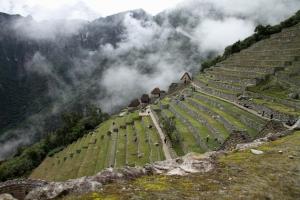Burj Khalifa: analysis of the tallest building in the world
Burj khalifa (Khalifa Tower) is a skyscraper located in Dubai (United Arab Emirates) that is, with a height of 828 meters, the tallest structure in the world raised by human beings. The start of the work dates from 2004 and was completed in 2010.
Let's discover one of the most ambitious buildings of the 21st century.
The tallest building in the world
The Burj Khalifa is, at 828 meters (2,717 feet) tall, the tallest skyscraper in the world to date. Taking the top spot from Taipei 101, in northern Taiwan, in 2007, which at that time was 509 meters high and 106 stories high.
Likewise, it also surpasses structures such as the National Tower of Canada, with a height that exceeds 553 meters, and the KVLY-TV Telecommunications Tower of the NBC channel, with more than 628 meters, located in Dakota del North.
The Burj Khalifa has a total of 189 levels and finds its highest point at 768 meters, then an antenna rises to its highest point (828 meters).

Distribution
The Burj Khalifa includes in the distribution of its floors an Armani hotel that occupies 37 of them. Also, another residential part that includes around 700 luxury homes. The rest of the levels are occupied by offices. On the 124th floor there is an exclusive viewpoint frequented by tourists called “At The Top”.
At the Top
It is an observation platform that is located on the 124th floor of the building, located approximately 442 meters high, which can be accessed by elevator. In it, the floor and walls are made of glass, which allows you to see the city of Dubai almost from a bird's eye view, with a 360º view.
Likewise, on floor 148 there is another viewpoint, located at 555 meters, also glazed, called "At the Top SKY".

Analysis
Concept: Flower Hymenocallis
The Burj Khalifa's structure is based on the geometric shape of the Hymenocallis flower, typical of the region, which is made up of six petals. However it is conceived as a three-petal flower for the concept of the building.

Base
Following the previous concept, the base of the building has a Y shape, formed by 3 wings. This configuration allows to alleviate the strong gusts of wind, typical of the area, allowing it to pass around it. The three main nodes of the flower act as the three main entrances that give access to the rooms that make up the building: hotel, offices and residences, one door for each of these.

Structure
As each of the wings rise, each one does so at a different height, which influences the structure of the building, which is getting smaller and smaller in the upper levels. If we understand the building in the shape of a flower, each wing would be like a petal that shortens when raised in height following a rotating pattern, in a left direction.
Mechanical floors
The Burj Khalifa is made up of six mechanical heights for the building's facilities and mechanics. They are visible on the façade, since these are visibly wider than the other plants and their color is darker.
At the last mechanical level, about 500 meters high, the area of the building decreases.

Interior design
The interior design of the Burj Khalifa was commissioned to designer Nada Andric. For this, he used polished stones, stainless steel, glass, rock floors.
The selection of materials was carefully made to largely simulate the most common components of local buildings. Also, inside there is a wide collection of works of art.
History and inauguration
The construction of the Burj Khalifa began in September 2004 to be conceived as one more part of a larger luxury complex called Downtown Dubai.
Its name is due to Khalifa Bin Zayed Al Nahayan, the Sheikh and President of the United Arab Emirates.
The American architect Adrian Smith was in charge of the project for this skyscraper, who worked together with the engineering and architecture studio SOM (Skidmore, Owings and Merril) until 2006.
In October 2009, five years after the start of the work, the creation of the external structure was completed.
It wasn't until January 4, 2010 that it opened with a spectacular opening ceremony. Then the Council of Tall Buildings and Urbaco Habitat recognized it as the tallest building in the world, thus officially surpassing Taipei 101, which had held the title until then.
Curiosities of the Burj Khalifa
- The Burj Khalifa is visible from 95 kilometers away.
- The construction of the skyscraper cost approximately 1.5 billion dollars.
- 330,000 m³ of concrete were used during the work.
- It is estimated that more than 10,000 fireworks were launched at the opening ceremony and more than 6,000 guests attended.
- The building has 57 elevators that go at a speed of 10 m / s.
- The Jeddah Tower (Jeddah, Saudi Arabia), a building under construction, by the same architect as the Burj Khalifa, aspires to snatch the title of "tallest building in the world.
- It is estimated that on the busiest days of construction there were around 12,000 workers dedicated to the Burj Khalifa.
- The exterior of the building is covered with 26,000 glass panels, designed to withstand high temperatures.
- Before its inauguration it was to be baptized as Burj Dubai, however the name was changed in honor of the president of the United Arab Emirates.
- Australia was initially thought of as the location for the building.
- The building requires almost 1 million liters of water per day to supply itself.
- It is estimated that its approximate weight may be 500,000 tons.



